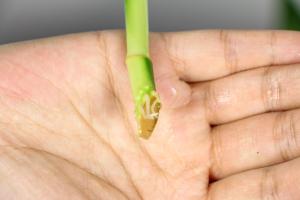Introduction
Red lights have always been popular in the world of gardening and agriculture, as it is believed that they can help plants to grow and develop more effectively. However, the question remains: are red lights actually good for plants? In this article, we will take a closer look at the science behind red lights and their effects on plant growth.
The Science behind Red Lights
Red light belongs to the visible spectrum of light, which is the portion of the electromagnetic spectrum that can be seen by the human eye. This spectrum includes light waves of different wavelengths, and each wavelength of light is associated with a different color. Red light has a wavelength of about 700 nanometers and is known to be one of the most effective colors for plant growth.
Plants use red light primarily for photosynthesis, which is the process by which they convert sunlight into energy. Red light is absorbed by chlorophyll, which is the green pigment in plants responsible for photosynthesis. In addition to providing energy for the plant, red light also plays a crucial role in regulating plant growth and development.
The Benefits of Red Lights for Plants
There are several benefits of using red lights for plant growth. First, red light can help to increase the rate of photosynthesis in plants, which in turn can lead to greater yields and faster growth. This is because red light is absorbed more efficiently by chlorophyll than other colors of light.
Second, red light can help to regulate plant growth and development by influencing the production of hormones such as gibberellins and auxins. These hormones play a crucial role in regulating plant growth, including the growth of leaves, stems, and flowers.
Finally, red light can also help to enhance plant color and flavor. Plants that receive adequate amounts of red light tend to have brighter colors and more intense flavors than those grown under other types of light.
The Drawbacks of Red Lights for Plants
While red lights can be beneficial for plant growth, there are also some drawbacks to using them. One of the main drawbacks is that red lights can be expensive to purchase and operate. They also require a significant amount of energy to produce, which can have an impact on your energy bill.
Another potential drawback of using red lights is that they can promote the growth of algae and other unwanted organisms in your grow area. This can be a problem if you are growing plants in an enclosed environment, as excessive algae growth can lead to reduced air quality and other issues.
Finally, some plants may not respond well to red lights and may require different types of light to grow and develop properly. It is important to research the specific needs of your plants before using red lights or any other type of lighting.
Conclusion
In conclusion, red lights can be a great option for those looking to enhance the growth and development of their plants. They provide many benefits, including increased photosynthesis and regulation of plant growth and development. However, they also have some drawbacks, including expense and the potential for algae growth. As with any form of plant care, it is important to do your research and understand the specific needs of your plants before making any decisions about lighting or other factors.

 how many times do yo...
how many times do yo... how many planted tre...
how many planted tre... how many pine trees ...
how many pine trees ... how many pecan trees...
how many pecan trees... how many plants comp...
how many plants comp... how many plants can ...
how many plants can ... how many plants and ...
how many plants and ... how many pepper plan...
how many pepper plan...































